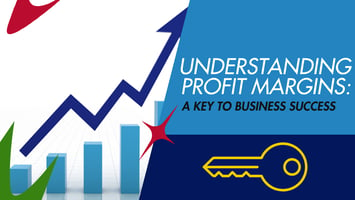As business owners, one of the primary goals is to maximize profitability and ensure long-term...
Mastering Focus and Growth: How to Prioritize What Matters in Your Business
Business owners are constantly bombarded with new ideas, opportunities, and urgent demands. As a result, maintaining focus and prioritizing initiatives that fuel real growth can become a relentless challenge. In the recent episode of The Ownership Advantage podcast, host Tanner and co-host Kay tackled these struggles head-on, offering listeners a practical, step-by-step approach to cutting through the noise and aligning daily decisions with long-term results.
If you’re wondering how to clarify your priorities, deepen your impact, and grow efficiently—without splitting your focus—these insights deserve your attention.
Start with Outcomes: The Foundation of Focus
Tanner sets the stage by emphasizing a foundational truth: “There’s no use in trying to prioritize anything if we don’t know what the outcome is that we’re looking for.” Whether you’re approaching a new quarter, launching a project, or just planning your next week, you must first clarify what success actually looks like. Is your goal to enroll a specific number of clients? Grow revenue? Perfect a particular product?
Kay echoes this sentiment, explaining how, as a business owner, she faces the urge to experiment with multiple directions at once—especially at the onset of a new quarter. But, as the conversation reveals, clarity is the only antidote to overwhelm and scattered energy.
Bottom line: Clear goals create the pathway to prioritize the steps and filter out the distractions.
From Experimentation to Depth: Focusing on Proven Winners
A key moment in the episode comes as Kay reflects on her recent strategy—testing several services in her business, particularly within DJ and artist coaching. After a period of “thinking horizontally,” she now finds herself holding data on which solutions have real traction.
Tanner advises: before going deep, make sure you have identified “winners” through meaningful testing. Analyze what consistently drives results. Then, and only then, shift from breadth to depth.
Kay’s example: Her in-person events consistently attract new artists and serve as an effective “top of funnel” lead generator. Meanwhile, her executive coaching (high ticket) program and a newly piloted group coaching offer are resonating with different types of clients.
Rather than spinning up entirely new offerings, they discuss refining and expanding what’s already working. For instance, introducing a group coaching option as a “downsell” for artists who aren’t ready for one-on-one coaching, thereby capturing potential clients with less risk and effort.
Real-world advice: Optimize conversion at each step of your funnel. Look for fall-off points and design offers that capture value you might otherwise lose.
Process, Not Proliferation: How to Grow Without Losing Focus
One of the standout lessons from this conversation is the concept of aligning new initiatives with existing, proven frameworks. Tanner notes that if your group and executive coaching share the same core curriculum, you’re not reinventing the wheel. You’re leveraging successful systems in new formats, thus multiplying your impact without diluting your energy.
Kay also highlights the importance of tracking and listening for trends during client intake and sales calls, which helps clarify who belongs in which program, and informs further refinement of offers.
Moreover, when your operations grow, so do your responsibilities. Kay illustrates this with her roster of 30 artists—each requiring personalized attention and event attendance—which quickly adds up. Tanner recommends delegation as a lever for sustainable growth: by developing documented sales or coaching processes, you can train others to handle key tasks, freeing you to focus on your unique strengths and next-level strategies.
Reverse Engineering Success: Implementing Practical Prioritization
How do you decide what to focus on for the next 90 days? Tanner’s guidance is refreshingly actionable: Reverse engineer your priorities. Identify where you want to be in 90 days—whether that’s a revenue target, number of group coaching members, or key events. Then, work backward to determine the exact actions, resources, and support you’ll need to get there.
This “outcome-to-task” method keeps you grounded, ensuring that every action is purposeful and aligned with a clearly defined destination.
Final Takeaway: Stay the (Clear) Course
The Ownership Advantage episode illustrates that business growth isn’t about doing more; it’s about doing more of what works. Start with clear outcomes, assess and double-down on proven initiatives, implement systematic delegation, and always let your desired results guide your decisions.
The discipline of focus is the cornerstone of sustainable, scalable success. Next quarter, don’t just do something new—do what matters, better.
Check out the full episode on YouTube HERE
Listen to the full episode on Apple Podcasts HERE


